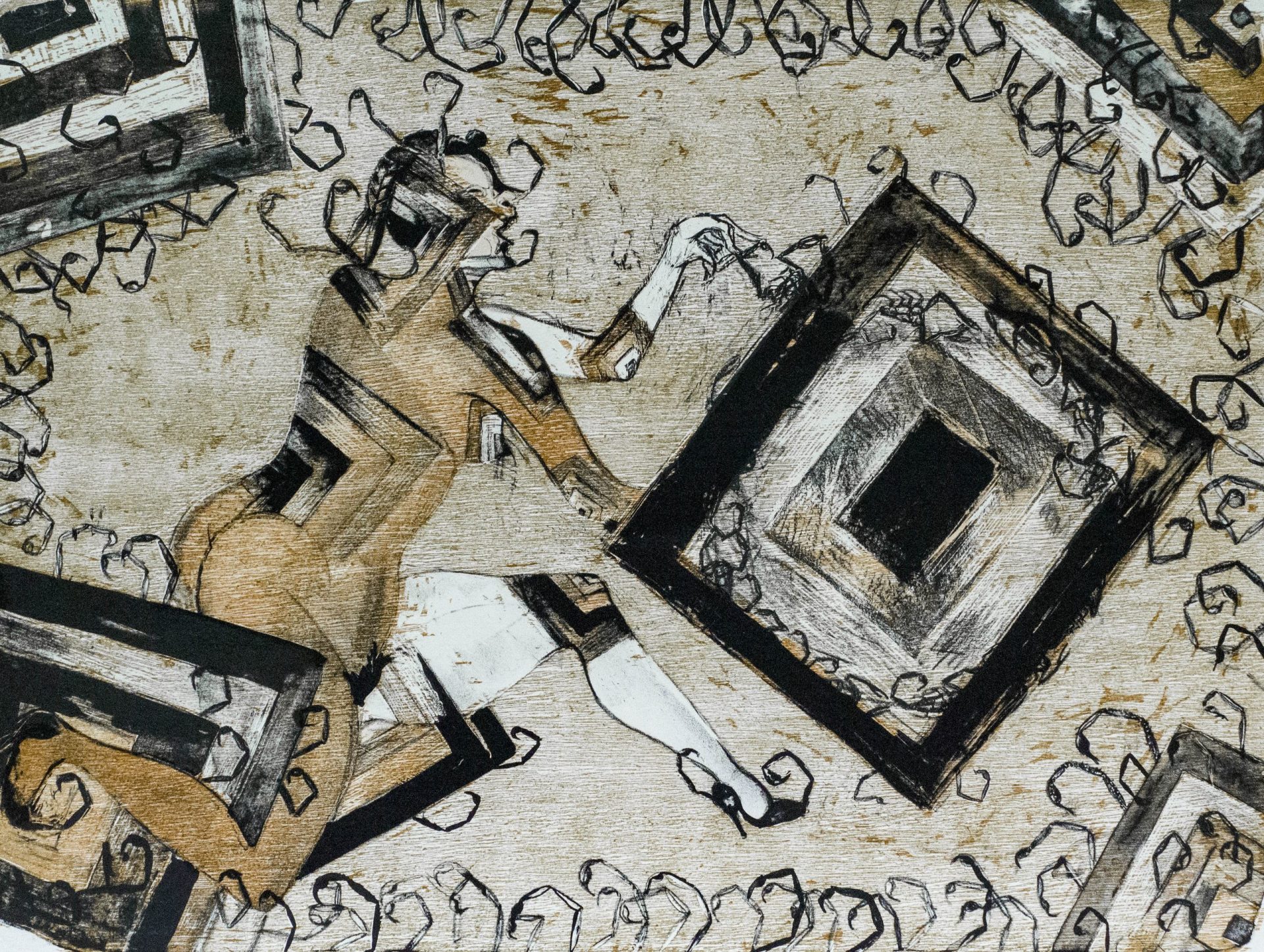Francisco Toledo
Francisco Benjamín López Toledo was born in Juchitán, Oaxaca (Mexico), in 1940. A multi-faceted artist, he dedicates his life and work to promoting and disseminating the culture and arts of his home state of Oaxaca.
As an independent artist, he did not get involved in the nationalist themes represented by the Mexican School. His work is based on the Zapotec tradition, from which he borrows themes and techniques, although he is also strongly and directly influenced by the contemporary language of artists such as Rufino Tamayo, Paul Klee, Jean Dubuffet and Antonio Tapiés.
Whether paintings or prints, weavings and ceramics, his works present a striking use of colour. He includes textures and materials to offer an aesthetic that falls somewhere between innovation and tradition, creating a fantastic world of his own with recurring themes and iconography. Therefore, the relationships of his work with the earth, air, and hybrid and fantastic insects and semi-human beings, arranged in space without order or rules, are constant features in his representations.
Work of art
“Mujer con alacranes” [Woman with Scorpions] represents an anthropomorphic being with a female body and forms, with scorpion tails emerging from her head and limbs. Two common themes in Toledo’s work come together here: the depiction of local insects and animals alongside the representation of imaginary, hybrid beings, with a symbolic use of language.
Francisco Toledo is an artist who flees from narrative, representing concepts in his works through figures or icons, known as metamorphic representations. This is also very typical of pre-Hispanic culture.
In “Mujer con alacranes”, we see clear references to the scorpion emerging from the woman’s limbs, as well as from the rectangular forms that accompany her, which are found both in the space around the scorpion-woman and on her body.
These geometric forms seem to refer to funerary constructions, both because of their shape – they look like pyramids seen from above – and because of the association that can be established between the scorpion tails and the meanders – geometric decorative motifs that are typical of pre-Hispanic funerary architecture. (See image 2)
Toledo creates his own mythological universe, full of these beings from his own particular bestiary, accompanied by references to both the modern day and to pre-Columbian culture.
-
 Mujer con escorpiones, 1985
Mujer con escorpiones, 1985Woman with scorpions
Francisco Toledo
Litography
Ed. 11/50
76 x 56 cmRalli Collection
© Francisco Toledo, VEGAP, Málaga 2025 -

Imagen 2. Geometric decorative motifs “grecas”.
-

Imagen 3. God Jaguar Tepeyóllotl, Códice Borgia.
Several divinities linked to the iconography of the scorpion are found within pre-Hispanic cosmology. The Aztecs associate it with the “lord of the underworld”, known as Mictlantecuhtli. In Mayan mythology it is clearly identified with the constellation of Scorpio. It is the god of hunting and war, and its name means “sign of the god of death”. Other symbolic associations with the scorpion are self-sacrifice, rain, the stars and sexuality.
Representations of anthropomorphic deities with scorpion tails are found in codices and archaeological remains alike. Toledo shows the semi-human female figure in the same attitude in which the gods were depicted in codices: in profile, with a geometric element or form between their hands. (See image 3)
We have identified various symbols related to the pre-Hispanic tradition in the work “Mujer con alacranes”; however, other references closer to the European tradition certainly do not go unnoticed. Toledo also draws from this, both in terms of historical heritage and of the contemporary relationship with culture and the European continent.
We can therefore also interpret the meanings associated with the symbols of “woman”, “death”, “sexuality” and “hybrid being” or “anthropomorphic” in a different way. According to Christian tradition we would be facing the personification of evil, a demonic being created to lead man into temptation and make him sin.
A more avant-garde reading of the work would lead us to see content it has in common with surrealism, sharing the fears and recurring topics of the movement, such as sexual desire and death, in particular that caused by sex, or by fear of it.
Silvia Sánchez Ruiz
Curator
VÁSQUEZ GALICIA, Sergio Ángel. “El alacrán en Mesoamérica: transgresor sexual y símbolo de lo negativo”. In: Itinerarios, V. 21 (2015). Universidad Nacional Autónoma de México. ISSN 1507-7241, pp. 101-122. Available at: https://dialnet.unirioja.es/descarga/articulo/6128096.pdf [Date consulted: 04/08/2022]
“La Leyenda del Alacrán” by Miguél León-Portilla. In: https://www.revistadelauniversidad.mx/download/eab50769-ab16-459b-95d6-04a3baae0264?filename=la-leyenda-del-alacran [Date consulted: 04/08/2022]
MELIC, Antonio (online). “De Madre Araña a demonio Escorpión: Los arácnidos en la Mitología”. In: ARACNET 10 – Revista Ibérica de Aracnología (Boletín), 5(2002), pp. 112–124. Available at: http://entomologia.rediris.es/aracnet/e2/10/03mitologia/ [Date consulted: 04/08/2022]
Images:
Imagen 2 – Geometric decorative motifs “grecas”. Extraído de: Orozpe Enríquez, Mauricio. “El símbolo sagrado de la greca escalonada. Un enfoque alterno de análisis a partir de su diseño”. Revista de Estudios Interdisciplinarios del Arte, Diseño y la Cultura, No. 7, México, 2022. Available at: https://masam.cuautitlan.unam.mx/seminarioarteydiseno/wp-content/uploads/2022/07/REIADC_No.7_An%CC%83o3_OrozpeEnriquez.pdf [Date consulted: 08/03/2024]
Imagen 3 – God Jaguar Tepeyóllotl, Códice Borgia. In: https://www.researchgate.net/figure/Figura-17-Tepeyollotl-y-Tlazolteotl-en-una-posible-representacion-de-la-gran-batalla-que_fig12_351884052 [Date consulted: 08/03/2024]
Related artists
Related Exhibitions
RELATED PROGRAMS
RELATED CONTENT



